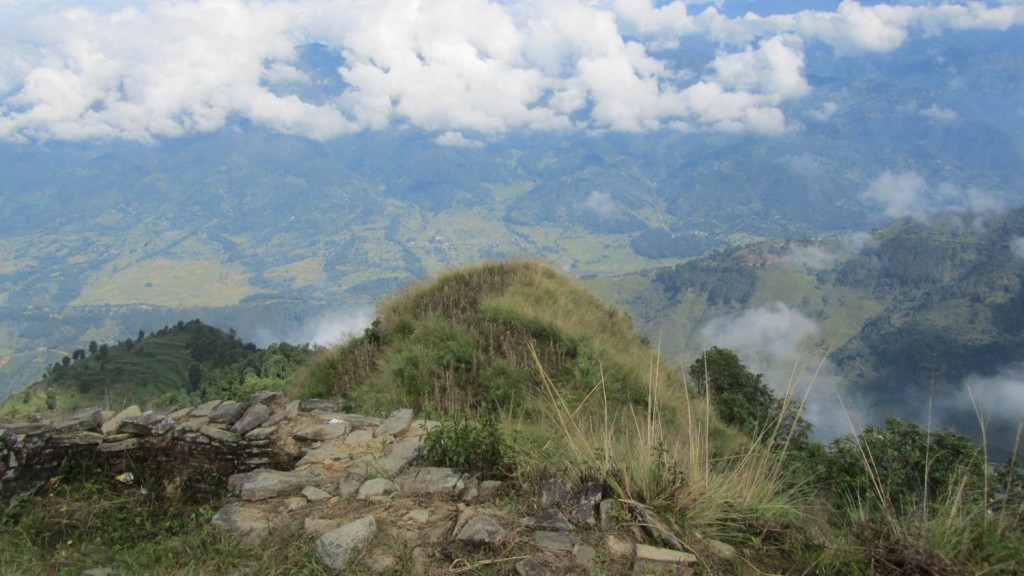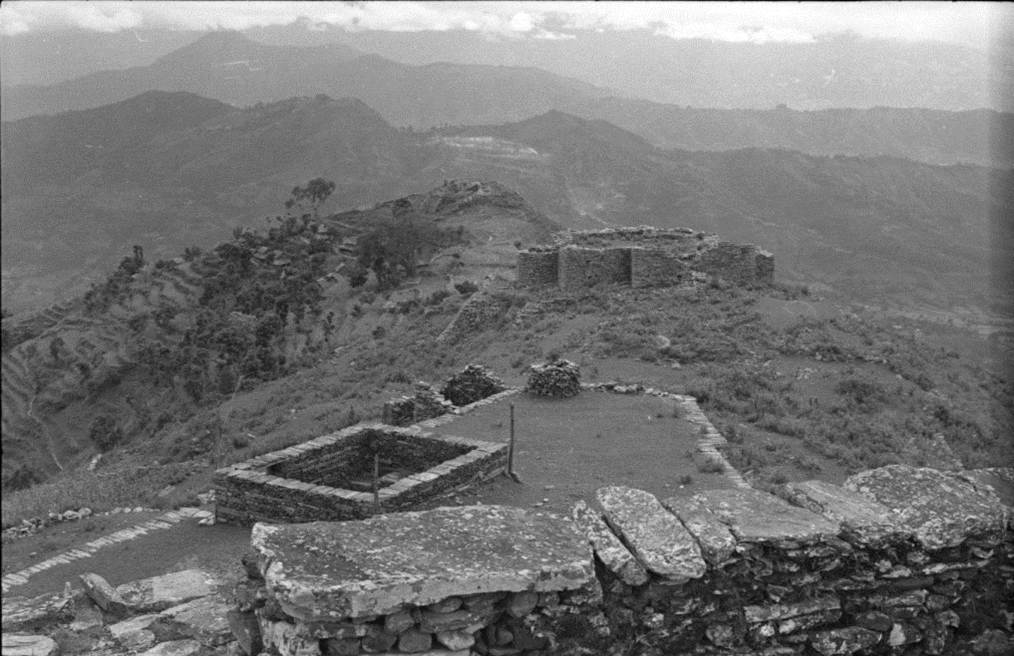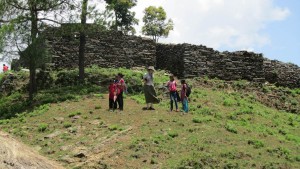by ELIZABETH GOLDSMITH (Wonders and Marvels Contributor) January 11, 2014
by Harvey Blustain, guest contributor
 Is there anyone who doesn’t sometimes think, “If I could do it all again….”? If I could go back 40 years, I would focus my academic career on understanding Liglig Kot.
Is there anyone who doesn’t sometimes think, “If I could do it all again….”? If I could go back 40 years, I would focus my academic career on understanding Liglig Kot.
Liglig is a mountain in Gorkha District in central Nepal. Kot in Nepali means fort or citadel, usually situated on a hilltop. Mention Liglig to Nepalis and many will tell you about a race. Once a year, a long time ago, they will say, warriors of the Ghale tribe would run from the Chhepe River to the peak of Liglig. The winner was crowned king for that year. But in 1559, Drabya Shah from neighboring Lamjung conquered Liglig by attacking on the day of the race, when its warriors would be preoccupied. In 1768, his descendant Prithvinarayan Shah conquered Kathmandu, 60 miles to the southeast, establishing the dynasty that was to rule Nepal until the overthrow of the monarchy in 2008. The seed of modern Nepal was planted at Liglig Kot.
At 1,441 meters, Liglig Kot offers a commanding position over the strategic Marsyangdi River valley and a panoramic view along 150 kilometers of the Himalayan range. First-time visitors to the site, even jaded Nepalis, are knocked out by the vistas.
The remains of buildings extend for hundreds of yards along the north-south ridge. Some structures, including what local people believe to have been Drabya Shah’s palace, have walls and steps that make it possible to imagine what it looked like. Other large buildings are partially buried, with only massive ramparts protruding from the hillside. Unnatural mounds hint at other structures buried below. Moats and defensive walls encircle the site. It is hard to envision the total site because it has never been mapped or extensively surveyed.
 When I did ethnographic fieldwork in the area in the 1970s, Liglig was barren of vegetation and only pilgrims visited the two small Siva temples. Since then, the communities surrounding Liglig Kot have taken an interest in the site with an eye toward tourism. The hilltop has been reforested. A local association has developed the site by building stairs, rest areas, latrines, picnic spots and other amenities. An annual race from the river to the kot is held to recreate the races of yore, complete with the crowning of the king for the year. Cultural festivals draw thousands of spectators.
When I did ethnographic fieldwork in the area in the 1970s, Liglig was barren of vegetation and only pilgrims visited the two small Siva temples. Since then, the communities surrounding Liglig Kot have taken an interest in the site with an eye toward tourism. The hilltop has been reforested. A local association has developed the site by building stairs, rest areas, latrines, picnic spots and other amenities. An annual race from the river to the kot is held to recreate the races of yore, complete with the crowning of the king for the year. Cultural festivals draw thousands of spectators.
Liglig is in danger of being loved to death. The forestation and construction are threatening the historical and structural integrity of the site. A cursory government Department of Archaeology survey recommended the development of a preservation plan that would balance the interests of researchers and development.
 For the past 18 months, my archaeologist (retired) wife (on active duty) and I have been living on Liglig, working as volunteer English and computer teachers in the same village where I did my doctoral research. If we could go back in time, we would be strongly tempted to make a career out of the Liglig site. The government’s Department of Archaeology estimates that the site was likely occupied for 13 or 14 centuries. After the Shah conquest, Liglig was the center of a series of regional fortifications, most of which still dot the landscape. There has been relatively little archaeology done in the hills of Nepal, and there is much to understand. Liglig looms large in the local (and to some extent, national) historical and ethnic imagination. There are oral histories to be collected.
For the past 18 months, my archaeologist (retired) wife (on active duty) and I have been living on Liglig, working as volunteer English and computer teachers in the same village where I did my doctoral research. If we could go back in time, we would be strongly tempted to make a career out of the Liglig site. The government’s Department of Archaeology estimates that the site was likely occupied for 13 or 14 centuries. After the Shah conquest, Liglig was the center of a series of regional fortifications, most of which still dot the landscape. There has been relatively little archaeology done in the hills of Nepal, and there is much to understand. Liglig looms large in the local (and to some extent, national) historical and ethnic imagination. There are oral histories to be collected.
We are starting to put together a coalition of people interested in developing a preservation and development plan for Liglig. We will see how far it goes. But what Liglig also needs is an ardent young archaeologist willing to commit to years of really interesting work in a fabulous location. We’re too old.
____________________________
For further reading on life near Liglig and Harvey Blustain’s work in Nepal, see blog.blustain.net
